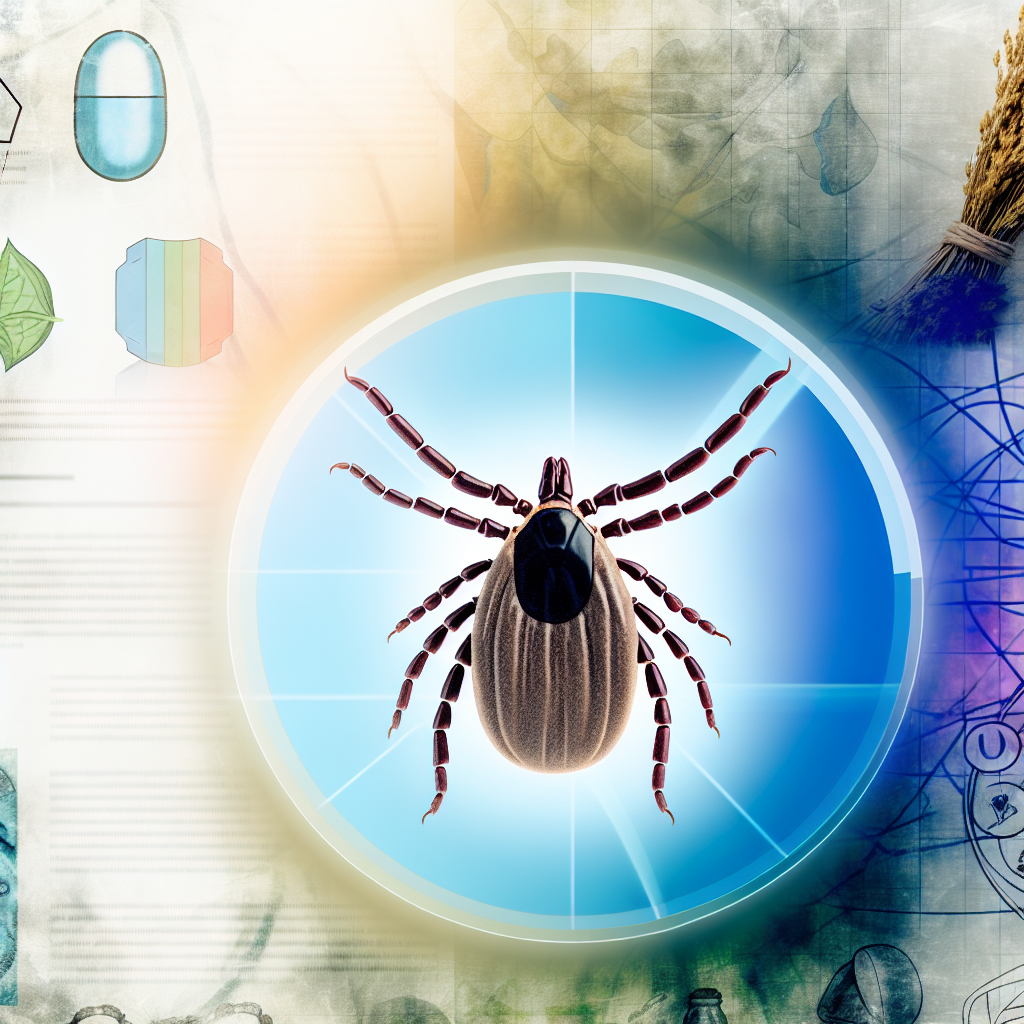Alternative Lyme Disease Protocols: Evidence-Based Approaches
Introduction
Lyme disease is a complex tick-borne illness caused by the bacterium Borrelia burgdorferi. It is transmitted through the bite of infected black-legged ticks, primarily in regions with high grass and wooded areas. People suffering from Lyme disease often experience flu-like symptoms, joint pain, neurological complications, and chronic fatigue. While conventional antibiotic treatments are prescribed for Lyme disease, many patients seek alternative and natural approaches, particularly those suffering from persistent symptoms after initial treatment—commonly referred to as Post-Treatment Lyme Disease Syndrome (PTLDS).
Alternative Lyme disease protocols include herbal, homeopathic, and integrative medical practices that aim to support the immune system, reduce inflammation, and assist the body’s natural ability to fight infection. Some of these approaches have been studied in clinical or preclinical research, while others are based on traditional healing practices passed down over generations. The growing interest in natural treatments stems from a desire to avoid long-term antibiotic use, which can lead to antibiotic resistance, gut microbiome imbalances, and other adverse effects.
Among the most researched alternative Lyme disease treatments are herbal protocols such as the Buhner Protocol, Cowden Support Program, and Dr. Rawls’ herbal therapies. These protocols utilize antimicrobial herbs like Japanese knotweed, cat’s claw, and Andrographis, which exhibit broad-spectrum activity against Borrelia and its co-infections. Some proponents of functional medicine also recommend immune-modulating therapies, dietary interventions, and detoxification programs to alleviate Lyme-related symptoms. Additionally, homeopathic remedies and energy-based therapies are growing in popularity, despite minimal scientific validation.
This article provides an evidence-based exploration of alternative Lyme disease treatments, discussing research that supports their effectiveness and where further clinical trials are essential. With Lyme disease prevalence rising, patients and practitioners must critically evaluate emerging natural therapies as part of a comprehensive treatment plan tailored to individual health needs.
The Promise of Herbal Treatments: What Research Reveals
The growing interest in alternative Lyme disease treatments has spurred scientific inquiries into herbal therapies and integrative medicine. Several studies and expert analyses provide promising insights into their efficacy:
Herbal Compounds That Show Antimicrobial Potential
A 2020 study conducted by the Johns Hopkins Bloomberg School of Public Health examined the antimicrobial effects of various botanical extracts against Borrelia burgdorferi in vitro. The study found that herbs such as Japanese knotweed (Polygonum cuspidatum), cat’s claw (Uncaria tomentosa), and Chinese skullcap (Scutellaria baicalensis) exhibited strong Borrelia-fighting properties, often outperforming conventional antibiotics like doxycycline, especially against persister forms of the bacteria.
Buhner Protocol: A Comprehensive Herbal Approach
Herbalist Stephen Harrod Buhner developed a well-respected herbal Lyme disease protocol using a combination of antimicrobial, anti-inflammatory, and immune-supportive herbs. His approach includes Japanese knotweed, Andrographis, and cat’s claw, which have been shown to inhibit Borrelia biofilm formation and reduce inflammation in preclinical studies. A review published in Frontiers in Microbiology (2021) supports the idea that botanical compounds can serve as adjunct therapies in Lyme disease treatment.
Cowden Support Program: Targeting Lyme with Botanical Extracts
The Cowden Support Program (CSP), developed by Dr. William Lee Cowden, involves a combination of antimicrobial herbal tinctures such as Samento (cat’s claw extract) and Banderol, both of which have demonstrated effectiveness against Borrelia in vitro. According to a 2015 study published in Antibiotics (Basel), these herbal extracts exhibit bactericidal properties when tested against Borrelia in laboratory settings.
Oxygen-Based Therapies: Can They Combat Lyme Disease?
Ozone Therapy and Hyperbaric Oxygen Therapy (HBOT)
Some alternative Lyme disease protocols include therapies aimed at increasing cellular oxygen levels to reduce bacterial infections. Ozone therapy, which involves introducing ozone gas into the body, is believed to improve immune function and combat persistent Lyme bacteria. Similarly, HBOT, which exposes patients to high-pressure oxygen environments, has been investigated for its potential to destroy anaerobic bacteria like Borrelia.
Although anecdotal evidence supports its benefits, scientific validation is still in early stages. A review published in Medical Gas Research (2022) suggested that hyperbaric oxygen therapy shows promise, but further large-scale trials are needed to confirm its effectiveness in treating Lyme disease.
Nutrition and Detox: Supporting Immune and Gut Health
Dietary Strategies That May Help With Lyme Disease
Functional medicine practitioners often emphasize gut health, anti-inflammatory diets, and detoxification protocols to alleviate symptoms of chronic Lyme disease. Research indicates that a diet rich in polyphenols, antioxidants, and probiotic foods can help modulate immune function and reduce neuroinflammation caused by Borrelia.
A 2018 review in Nutrients highlighted how nutrition plays a role in managing chronic infectious diseases, including Lyme disease. Supporting the gut microbiome and reducing systemic inflammation through dietary choices may improve symptom management for patients undergoing treatment.
Conclusion: Balancing Alternative and Traditional Treatments
Alternative Lyme disease protocols continue to gain traction as patients search for solutions beyond traditional antibiotics, especially in cases of persistent symptoms. While some therapies, such as herbal antimicrobials and oxygen-based treatments, have promising support in early research, large-scale clinical trials are necessary to solidify their efficacy. The Buhner and Cowden protocols demonstrate significant antimicrobial properties in laboratory findings, while dietary and detox approaches offer supportive benefits through immune modulation.
It remains crucial for individuals to approach natural treatments with caution, consulting informed healthcare practitioners to develop a balanced treatment plan. As Lyme disease remains a growing public health concern, integrative medicine and scientific research must work collaboratively to provide more robust, evidence-based treatment options. Patients should remain proactive in their health decisions by incorporating well-researched natural treatments while continuing to advocate for further clinical studies to better understand alternative Lyme disease interventions.
Summary:
Alternative Lyme disease protocols, including herbal, homeopathic, and integrative approaches, are gaining popularity as patients seek solutions beyond traditional antibiotics. Research suggests some herbal compounds, like Japanese knotweed and cat’s claw, exhibit antimicrobial properties against Borrelia burgdorferi, the bacteria that causes Lyme disease. Protocols like the Buhner and Cowden programs utilize these herbs, while oxygen-based therapies and dietary/detox interventions also show promise. However, large-scale clinical trials are still needed to confirm the efficacy of these alternative treatments. Patients should consult informed practitioners to develop a balanced approach, as integrative medicine and scientific research continue to collaborate on providing evidence-based Lyme disease solutions.
References:
1. Johns Hopkins Bloomberg School of Public Health
2. Frontiers in Microbiology
3. Antibiotics (Basel)
4. Medical Gas Research
5. Nutrients Journal

Dominic E. is a passionate filmmaker navigating the exciting intersection of art and science. By day, he delves into the complexities of the human body as a full-time medical writer, meticulously translating intricate medical concepts into accessible and engaging narratives. By night, he explores the boundless realm of cinematic storytelling, crafting narratives that evoke emotion and challenge perspectives.
Film Student and Full-time Medical Writer for ContentVendor.com



